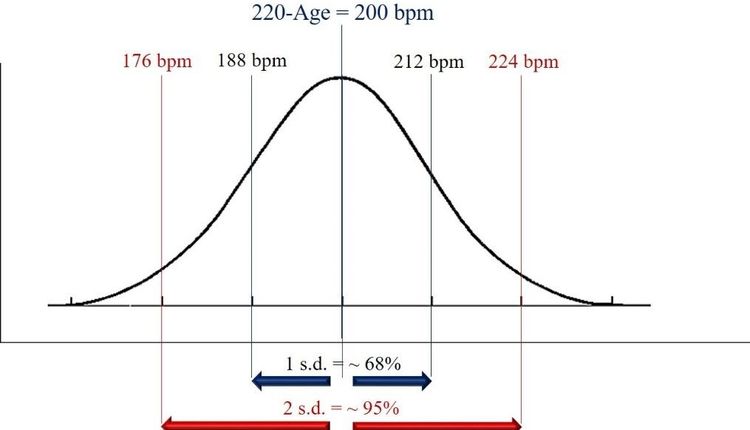Once a fringy, unpopular notion dismissed by some as downright unhealthy, eating your vegetables is now a mainstream idea. If you're skipping meat entirely, you're in good company: More than 5 million Americans say they never eat red meat, poultry, or fish. Instead they fill their plates with plant-based foods, from vegetables, legumes, and fruits to nuts and grains.
In truth, there is no one vegetarian diet but many kinds, depending on the foods you pull out of the food pyramid and, more important, those you leave behind. Vegetarian types include these:
- lacto-ovovegetarians, who include milk and eggs in their diet
- lacto-vegetarians, who include milk but no eggs
- vegans, sometimes called total vegetarians, who eat no animal products at all
- semi-vegetarians, who refuse red meat but eat fish and chicken
People become vegetarians for lots of reasons political, ecological, economic, religious, and medical. Some believe it's cruel to kill and eat animals. Others point out that an animal has to eat nine pounds of grain to produce one pound of meat. Around the world, many cultures and religions embrace vegetarianism, from certain Hindu sects to Trappist monks in the Roman Catholic Church. But recently the promise of better health and a chance at a longer life have prompted all sorts of people to permanently shove steaks off their dinner plates in favor of more vegetables and grains.
A vegetarian diet is often lower in fat and cholesterol, which cuts your risk of heart disease. And studies also show that eating lots of fruits, vegetables, and whole grains seems to lower your risk of obesity, high blood pressure, diabetes, and cancers of the stomach, pancreas, bladder, and lung. Certain items such as broccoli, brussel sprouts, and other members of the cabbage family may offer special protection against breast and colon cancer. Other studies have found that eating dark leafy greens reduces the risk of macular degeneration, a common cause of blindness in people over 65.
How do I plan a healthful vegetarian diet?
If you're a reasonably healthy adult, a little planning will do it. For others with special nutritional needs infants, growing children, and pregnant or breastfeeding women you'll have to give it a little more thought. A lot depends on which type of vegetarian diet you're talking about. For children, a balanced vegetarian diet with milk and eggs can provide enough calories and nutrients, but more restrictive vegan diets often fail to meet their needs for energy and proper growth. If you're raising your child on a vegan diet, consider talking to a registered dietitian for meal planning tips, and ask your child's pediatrician to keep an eye on your child's growth and development.
Otherwise, concentrate on the following food groups and aim to eat the suggested serving sizes each day. If you add them up, the total may seem like a lot of food, but keep in mind that a serving size is actually quite small as little as one slice of bread, a quarter cup of dried fruit, a half cup of vegetables, or two tablespoons of nuts.
· Bread, cereal, rice, and pasta: six to 11 servings daily
· Vegetables: three to five servings daily
· Fruit and fruit juices: two to four servings daily
· Dry beans, nuts, seeds, eggs, and meat substitutes (tofu, veggie burgers made from soy products): two to three servings daily
· Milk, yogurt, and cheese: one to three servings daily (unless you're a vegan); go for low-fat choices if you're a non-lactating adult
Which nutrients should I be especially sure to get?
As long as you include enough protein, calories, vitamin B-12 (which comes only from animal foods), and other nutrients, you don't need to worry that you're compromising your health. Be sure to get these:
· Calcium, essential for strong bones and teeth. If you're a vegan and skipping milk or dairy products, you can get the calcium you need from dark green vegetables (broccoli, kale, collard and turnip greens), fortified soy milk and orange juice, and tofu processed with calcium sulfate.
· Vitamin D, which helps the body absorb calcium. Get it in fortified milk and egg yolks. Exposing your hands and face to sunlight each day for ten to 15 minutes helps your body make vitamin D, too.
· Vitamin B-12, crucial for a healthy nervous system and blood cells. Dairy products are a good source. If you're a vegan, you may want to take a calcium supplement as well as vitamin supplements or fortified soymilk, cereals, and nutritional yeast to get enough B-12. Foods such as spirulina, miso, and tempeh are promoted as good sources, but they often contain inactive forms of B-12 that can harm you by preventing your body from absorbing active B-12.
· Protein, which your body needs for tissue growth and repair. Grains, legumes, nuts, and dairy products are good sources.
· Iron, needed for healthy red blood cells. Some dried fruits and fruit juices, such as raisins and prune juice, have lots of iron; so do legumes and enriched breads and grains. To boost your body's ability to absorb iron, eat a food rich in vitamin C (orange juice, citrus fruit, melons, strawberries, kiwi, or tomatoes) at every meal. A tip for increasing the iron in your food: use iron cookware. Finally, don't fall back on taking iron supplements without a call to your doctor first; too much iron can be harmful.
· Zinc, essential for healthy tissue and for insulin, the hormone that regulates blood sugar. You'll find zinc in wheat germ as well as in hard cheeses, nuts, tofu, and legumes.
Finally, to give your body a shot at warding off certain cancers, work these vegetables into your diet: dark leafy greens, such as spinach and collard greens; deep yellow vegetables, such as carrots, yams, and squash; and cruciferous vegetables such as broccoli, brussels sprouts, and cauliflower. Other good choices are cabbage, broccoli sprouts, and tomatoes.
How do I escape the same old salad and pasta routine?
Today vegetarian cookbooks and Web sites offer enough recipes and tips to make every meal an adventure. And don't just look for new dishes find new friends, too. It's tough to be the only vegetarian in the crowd. In many cities, vegetarians form their own local groups, who get together for potlucks and recipe swaps. For fun outings, some groups head for vegetarian restaurants or reserve a room at an eatery and request a special vegetarian menu just for them.
What else can I do to eat well in a nonvegetarian world?
If you're invited for a meal at a nonvegetarian home, gently inform your hosts that you're vegetarian and offer to bring a dish. Thanksgiving and Christmas feasts usually feature much more food than the centerpiece turkey or roast, so concentrate on the "side" dishes. When dining out with friends, suggest Indian, Chinese, or Italian food. Indian restaurants often have vegetarian entrees on the menu, Chinese places stock so many fresh vegetables that they're often able to prepare something upon request, and Italian eateries can usually serve up pasta and vegetables.
When you're traveling, call the airline and order a vegetarian meal ahead of time. You'll find that many hotel kitchens are willing to make small changes to menu items. Say you spot a pasta and sausage entree with side dishes of mushrooms or artichoke hearts. Ask the chef to toss the pasta with mushrooms and artichoke hearts and hold the sausage. Being on the road doesn't mean you have to make do with just a salad.
Kristin Kloberdanz, M.A., a former associate editor for Consumer Health Interactive, is an editor at Book magazine in







